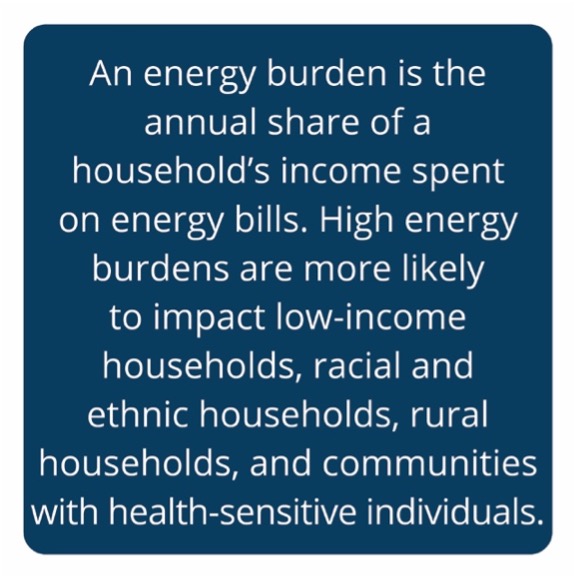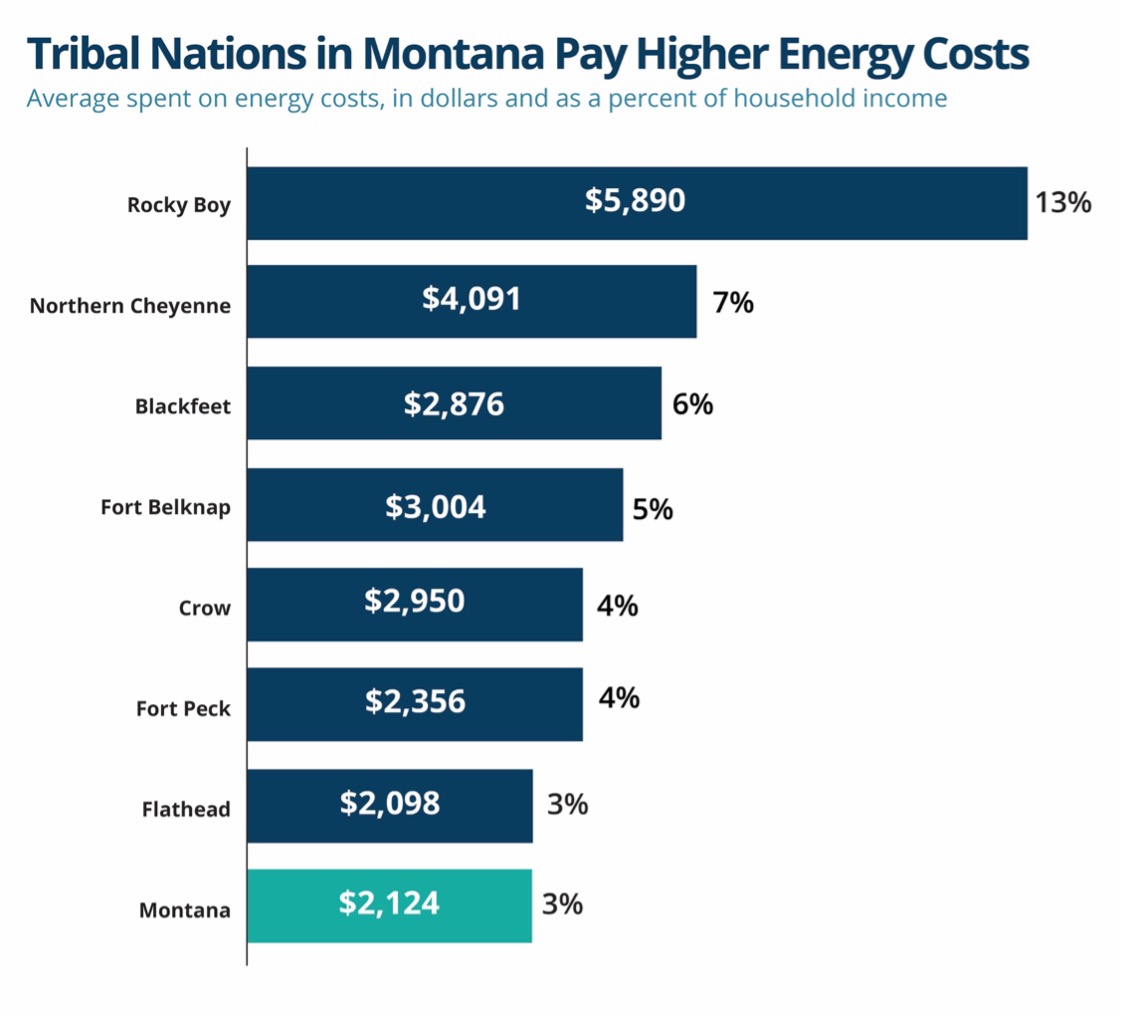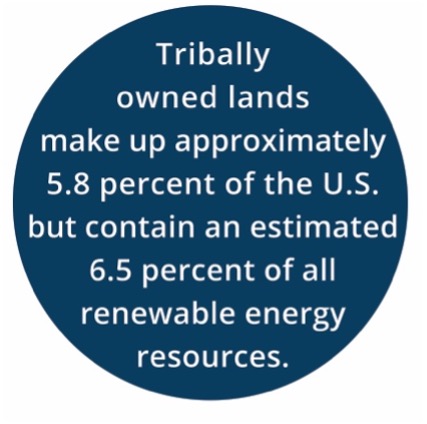Climate change is the long-term shift in temperatures and weather patterns. Since the 1800s, human activity has been the main driver of climate change, primarily due to burning fossil fuels, including coal, oil, and gas, for electricity, heat, and transportation.[1] About 60 percent of Montanans believe that climate change is real and adjustments should be made to slow our impact.[2] However, for some Tribal Nations, there is little doubt that the world's climate is shifting. Many Tribes in Montana have begun looking towards alternative ways to decrease their impact on the environment by creating climate adaptation plans or environmental impact studies.[3]
Climate change multiplies threats that already exist for many different communities, including older adults, Indigenous people, people living on low incomes, people with chronic illnesses, some Tribal communities, and communities of color. This means that climate change makes it more difficult for communities that face barriers to political, social, economic, or environmental resources to access them.[4] An ongoing lack of investments in infrastructure has existed in many communities for decades. More drastic environmental shifts from climate change further expose inadequate infrastructures. A study by the U.S. Department of Energy for the Great Plains Region, which includes Montana, named the electric grid and fuel supply infrastructures as particularly vulnerable to severe weather events such as wildfires, droughts, and winter storms.[5]
Tribal Nations Face Higher Energy Burdens
The electric transmission and distribution grid commonly referred to as the grid, moves power from generating plants to customers based on their demand using power lines.[6] It serves the vital function of moving power from generating plants to customers and providing all Montanans with the electricity to power their homes at a cost to the consumer. However, the cost of electricity does not affect every Montanan the same.

Energy burdens are one of the structural inequities that climate change exacerbates. High energy burdens are more likely to impact households living on low incomes, racial and ethnic households, rural households, and communities with health-sensitive individuals.[7] In the United States, the median energy burden of Native American households is 45 percent higher than that of non-Latinx white households.[8] Tribal communities also experience 6.5 times more electricity outages per year than the national average.[9] Higher energy burdens have been linked to a greater risk for respiratory disease, higher economic hardship, and stress, making moving out of poverty more challenging.
Montana households spend about 3 percent of their annual income on energy costs, or about $2,124 annually.[10] For Tribal Nations, the scenario differs significantly. Tribal citizens residing on reservations grapple with double the energy burden compared to the rest of the state. This means that while the rest of the state pays about 3 percent of their income on energy costs, those living on reservations pay about 6 percent of their paychecks. Rocky Boy has the highest energy burden, spending 13 percent ($5,890 annually) of their paychecks on utilities.

Why Higher Energy Burdens for Tribal Nations?
Higher energy burdens for Tribal communities exist due to decades of underinvestment in reservation infrastructure. One reason for higher utility costs for Tribal Nations is that many nations tend to be in more rural locations that are isolated from larger electrical systems.[11] Additionally, because infrastructure funding has been limited for Tribal communities, many homes and community buildings are inefficient. Improving the energy efficiency of buildings has tremendous environmental benefits and improves energy costs. Energy efficiency reduces overall consumption and lowers energy demand.7 Decreasing consumption directly leads to meaningful reductions in particulate matter, nitrogen oxide, sulfur dioxide, and carbon dioxide emissions.
Another cause for concern arises from the historical interactions between the federal government, corporations, and Tribal Nations. While many Tribal Nations have engaged in energy development within their communities, they have often encountered obstacles in fully reaping the benefits due to a legacy of energy exploitation. For example, during the 1970s to 1980s, global energy prices soared, but research revealed systematic reporting errors and underpayment for Tribes involved in energy development.[12] Extensive evidence showed a history of energy leases negotiated by the Department of the Interior at below-market terms for Tribal Nations, along with weak federal enforcement of environmental protections and royalty compliance. Tribal Nations fought for change by exercising their right to self-determination, in some cases by stopping mineral development altogether or going directly to the secretary of the Interior to create their own contracts.[13]
Tribal Nations leveraged proof of mishandling to push for the Indian Mineral Development Act (IMDA). The IMDA addressed these problems, enabling them to develop leases and negotiate environmental protections. As more Tribal Nations pursue renewable energy sources, Tribes are still at the forefront of policy change. New policies such as the Inflation Reduction Act of 2022 have enabled Tribes to access federal tax credits where previously they could not. Tribal Nations asserting their sovereignty has pushed policies to shift to better support Indian Country.
Tribal Nations Turn to Renewable Energy to Address High Energy Burdens
 Many Tribes have begun addressing high energy burdens by investing in renewable or alternative energy projects. Tribally owned lands make up approximately 5.8 percent of the United States but contain an estimated 6.5 percent of all renewable energy resources.[14] Renewable energy is energy derived from natural sources that are replenished at a higher rate than consumed.[15] Sunlight, wind, and hydroelectricity are examples of renewable energy that create lower emissions than burning fossil fuels like coal, oil, and gas. Since 2010, there have been nine renewable energy projects by Tribal Nations in Montana.[16] For example, the Blackfeet Community College Renewable Energy Project, has saved over $4,000 annually in energy costs by using solar energy. The project has also been used to train people interested in developing a career in renewable energy installation.[17] However, not all projects have resulted in complete renewable energy access, despite Tribes having completed planning projects or even installing solar panels. Barriers to renewable energy and ultimately receiving the benefits vary from nation to nation.
Many Tribes have begun addressing high energy burdens by investing in renewable or alternative energy projects. Tribally owned lands make up approximately 5.8 percent of the United States but contain an estimated 6.5 percent of all renewable energy resources.[14] Renewable energy is energy derived from natural sources that are replenished at a higher rate than consumed.[15] Sunlight, wind, and hydroelectricity are examples of renewable energy that create lower emissions than burning fossil fuels like coal, oil, and gas. Since 2010, there have been nine renewable energy projects by Tribal Nations in Montana.[16] For example, the Blackfeet Community College Renewable Energy Project, has saved over $4,000 annually in energy costs by using solar energy. The project has also been used to train people interested in developing a career in renewable energy installation.[17] However, not all projects have resulted in complete renewable energy access, despite Tribes having completed planning projects or even installing solar panels. Barriers to renewable energy and ultimately receiving the benefits vary from nation to nation.
Navigating Montana's Complex Utility Grid System
One possible barrier to affordable clean energy is Montana's complex utility systems and corresponding policies. Tribes are sovereign nations and are not subject to state or local jurisdiction. However, in some cases, the electric utilities that serve them are.[18] The Montana Public Service Commission (PSC) oversees all investor-owned utility companies (IOUs) in Montana. IOUs are privately owned enterprises that provide infrastructure and electricity to consumers for profit. There are only two IOUs in Montana: Northwestern Energy and Montana-Dakota Utilities.[19] The PSC manages these companies' power rates and electricity development. This model of having IOUs that are not in competition with one another for customers is called a regulated market and is often considered a monopoly due to its limitations on consumer choice. The benefits of this system include stable prices and long-term certainty.[20] Residential customers do not get to choose who provides their electricity. Instead, the provider is determined by where they live.
IOUs provide electricity to most urban areas, whereas cooperative utility companies (co-ops) provide energy to rural areas. Co-ops are defined as not-for-profit electric utilities owned by their members. Part of their mission is to offer electricity at the cost it takes to provide it with profits given back to its member-owners.[21] Co-ops are governed by a board that their members elect. Tribes are often not represented in decision processes that impact the services they receive from co-ops. Twenty-five co-ops serve more than 400,000 Montanans across the state.[22] Since most Tribal nations in Montana are in rural locations, many are served by co-ops that are not subjected to policies set by the PSC.[23] The Séliš, Ksanka, Ql̓ispé (Confederated Salish and Kootenai Tribes or CSKT) is the only Tribal Nation in Montana that operates its own co-op utility company.[24]In a study by the National Renewable Energy Laboratory, Tribes were primarily concerned about being left out of the utility companies’ decision-making processes, or their concerns being ignored when they do engage. There are several reasons tribes may not engage in the decision-making processes, including election procedures with voting districts that may not enable a Tribal candidate to attain a voting majority, capacity issues, or concerns about reductions of their sovereignty.[25]
State Policies Impact Rural Utilities
There are only two ways the state has exercised authority over co-ops regarding renewable energy. First, the Montana Universal System Benefits Program (USB) requires co-ops to fund energy conservation, renewable resource projects and applications, and low-income energy assistance.[26] Co-ops and all other utilities must fund the programs at 2.4 percent of their 1995 retail sales revenue. Utilities also receive credits for internal USB programs, and co-ops can pool their credits collectively statewide. From there, the Department of Revenue establishes accounts with the Department of Environmental Quality (DEQ) and the Department of Public Health and Human Services (DPHHS). The DEQ uses the funds to provide energy efficiency upgrades to public-use buildings, and DPHHS funds low-income weatherization activities.
The second way the state had exercised authority was Montana's Renewable Energy Portfolio Standard (RPS) which was repealed in 2021. An RPS is a state policy designed to reduce a state's carbon emissions by increasing the use of renewable energy.
The state's regulatory powers over co-ops were small even while it existed. Co-ops were exempt from participating unless they served 5,000 or more customers. Then, the co-ops were "responsible for implementing and enforcing a renewable energy standard for that cooperative utility that recognizes the intent of the legislature to encourage new renewable energy production and rural economic development, while taking into consideration the effect of the standard on rates, reliability, and financial resources." However, the RPS policy was repealed in 2021.[27]
Roadblocks to Renewable Energy
There are several reasons why Tribal Nations might face delays in obtaining renewable energy. Many hold-ups can occur when Tribal Nations attempt to secure agreements to connect to their regional electric grid. State and local governments new to installing renewable energy may be adopting processes for the first time, which can have higher costs due to inefficiencies in permitting, inspection, and interconnection.24
The interconnection process is the set of rules that new electricity generators like wind or solar must follow to connect to the electric grid and deliver energy safely to customers. Although IOUs have a state-regulated process, co-ops create their own processes that are unique to the utility. The interconnection agreement consists of a multi-step study process that assesses potential impacts to the grid. These studies often require the generator, in this case a Tribal Nation, to fund any upgrades to the grid infrastructure.[28] This is especially common when grid systems are old or outdated, making it more difficult to connect more advanced technology to older infrastructures. As of 2024, Montana ranks 50th for in grid modernization efforts.[29]
Net metering is another part of connecting renewable energy to the grid and receiving full benefits. This process allows customers who generate electricity from solar power to sell or "store" the electricity they are not using back into the grid.[30] On days when the renewable energy source is not producing enough energy, for example, on cloudy or rainy days, the utility grid will count the energy against the credits that have been gained over time. The company will only bill for "net" energy usage. This is where many customers who use renewable energy see financial benefits. It is important to note that it is possible to use renewable energy without net metering, but it often increases the cost because it requires the purchase of a separate battery to store excess energy.[31]Montana has set policy standards for the interconnection process for IOUs, but co-ops create their own policies for implementing interconnection and net-metering.25
Steps Towards the Future
Currently, no Montana policies are in place to reduce greenhouse gas emissions. Still, Montanans are fighting for their rights to a brighter future. In 2021, HB 576 repealed Montana's RPS, and no bill has been passed to replace it.26 During the 2023 biennium, HB 971, one of the most controversial energy and environmental policy bills, was passed.[32] This legislation stops state regulators like DEQ from including analyses of greenhouse gas emissions and climate impacts when conducting reviews of large projects.
A few months later, Held v. Montana, a landmark environmental law court case was decided. The judge ruled in favor of 16 youth plaintiffs, which included members of CSKT and Apsáalooke (Crow) Tribe. The plaintiffs spoke on environmental impacts they have faced that affected their ability to practice their culture and traditional Indigenous foodways. The case successfully argued that the state violated the plaintiffs' constitutional right to a "clean and healthful environment" by actively prohibiting safeguards like greenhouse gas emissions tests and climate impact studies during environmental reviews.[33]
Although Tribes have been involved with developing renewable energy projects for many years, as of 2022, the federal government passed the Inflation Reduction Act (IRA), which helps improve access to renewable energy projects. The IRA offers historic funding levels to invest in clean energy and climate resiliency projects with more opportunities to invest in Tribal Nations. It secures about $720 million specifically for Tribal Nations and gives an opportunity for Tribes to use tax credits for clean energy investments.[34] Previously, as non-taxable entities, Tribes were left out of tax credit programs, making it harder for Tribal Nations to support ongoing updates to energy infrastructure. The IRA allows Tribes to receive direct payment or elective payment, meaning the amount of the tax credit is treated as a tax payment and any overpayment will result in a refund. For example, if a Tribal Nation were to make a clean energy investment, they qualify to file an annual tax return from the IRS to claim the full value of the investment tax credit, as long as they meet the pre-filing registration requirements.[35]
To learn about available funding, there are more resources available, including an Inflation Reduction Act Tracker with the most recent funding announcements as well as guidebooks with a comprehensive list of available funding:
Supporting Energy Security
With new opportunities for energy development on the rise, now is the time to support long-term investment in Indian Country. Supporting alternative solutions to modern problems benefits all Montanans.
Luckily, leaders across different sectors can make reforms to build on the work Tribal Nations have done to achieve energy security.
Tribal Leaders
Tribal leaders can reduce unexpected obstacles to renewable energy by:
Legislators
Legislators can support energy security by:
Utilities
Utility companies can support tribal sovereignty by:

MBPC is a nonprofit organization focused on providing credible and timely research and analysis on budget, tax, and economic issues that impact low- and moderate-income Montana families.